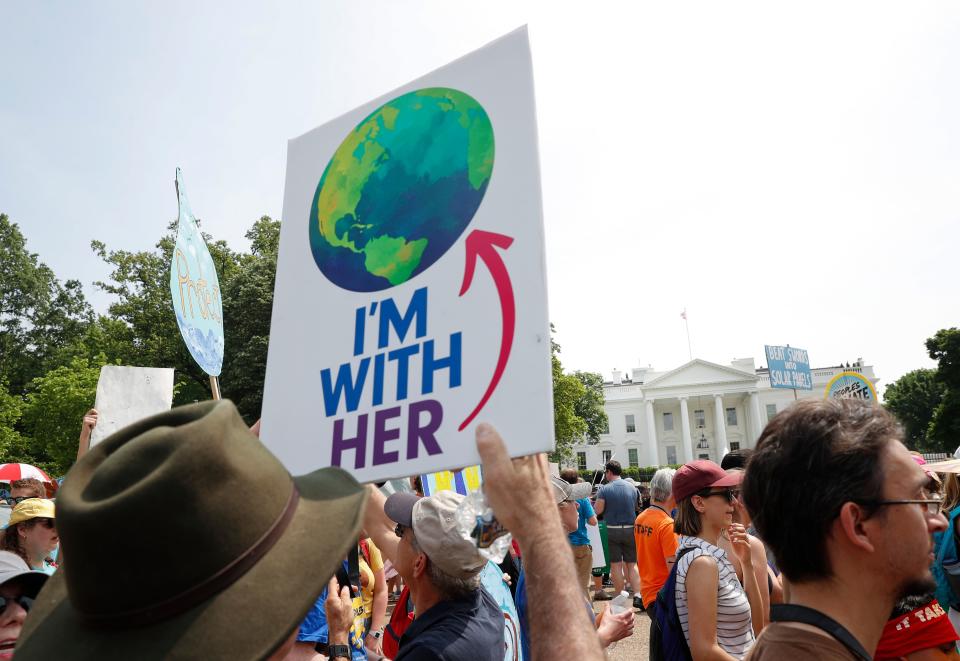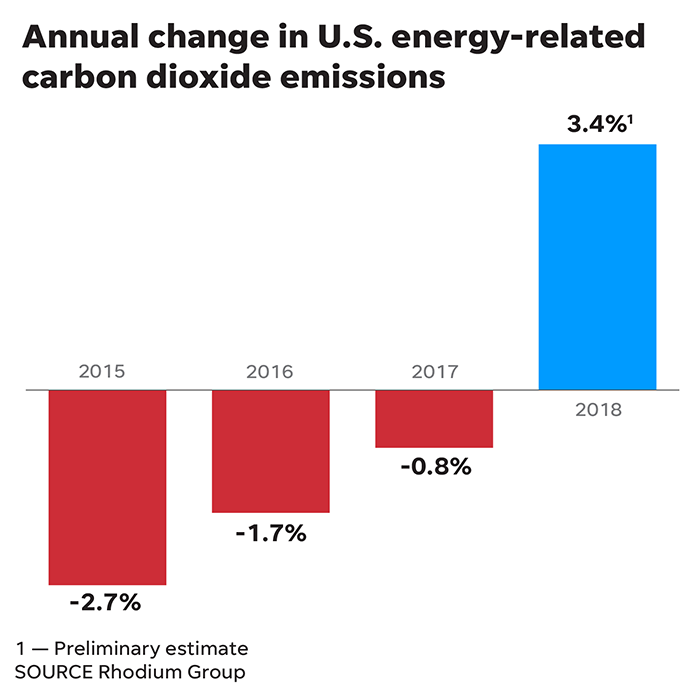Greenhouse gases blowing the wrong way for America
Corrections & clarifications: This editorial has been updated to make it clear that the 2018 carbon emission figures refer to percentage increase, not total tonnage.
For a pollutant that threatens the future of the planet, carbon dioxide does a Madison Avenue-worthy job of image management.
It's colorless, odorless and tasteless. But it wraps around the globe like a heat-trapping blanket. Last year saw the biggest percentage increase since 2010 in the amount of energy-related carbon dioxide dumped into the air, according to research estimates.
If CO2 smelled like rotten eggs and gave the atmosphere a sickening green hue, it's a safe bet that this gas — which the U.S. Supreme Court ruled in 2007 can be regulated by the federal government — would get a lot more attention.
President Donald Trump, who repeatedly claims a desire for clean air, might actually do something about it. "I'm an environmentalist. I want crystal-clean water. I want crystal-clean air," he told a Las Vegas rally last September.

OPPOSING VIEW: Carbon prices are like unicorns and fairy dust
Well, the air is filthy with CO2. Levels of carbon dioxide — which occur naturally when people exhale but unnaturally when fossil fuels are burned — were 280 parts per million at the dawn of the industrial age in the late 1800s. Last year, CO2 measured 410 parts per million, greater than the Earth has experienced in millions of years.
The result has been a warming planet with rising seas, more extreme weather and damaging wildfires. Heat generated by greenhouse gases in the atmosphere is warming the oceans at a much faster rate than previously thought, according to a new study published this week in the journal Science.
Until last year, America had three consecutive years of declining carbon emissions, thanks in large part to regulations on vehicle emissions (something Trump seeks to reverse) and power companies turning away from burning coal.
A record number of coal plants closed last year because of cheaper natural gas and the pending Obama-era Clean Power Plan (which Trump seeks to scrap). But a combination of other factors — including a surging economy, heating demands, more trucking and air travel, and unregulated hikes in industrial pollution — caused carbon emissions in 2018 to rise an estimated 3.4 percent, according to a Rhodium Group analysis.
That makes it even tougher for the United States to meet its promises under the Paris climate agreement (from which Trump has chosen to withdraw).
Even the international goals under that accord will likely not be enough to avoid the worst of climate change, according a United Nations study and a report by 13 federal agencies released last year.
Where to go from here? We've long endorsed putting a price on carbon dioxide by taxing fossil-fuel polluters who use the skies as a free waste dump, and refunding the proceeds to consumers. This market-based approach would make cleaner energy sources more competitive.
Energy taxes are never popular, particularly if the benefits are hard to see. But the costs of inaction are incalculable.
USA TODAY's editorial opinions are decided by its Editorial Board, separate from the news staff. Most editorials are coupled with an opposing view — a unique USA TODAY feature.
To read more editorials, go to the Opinion front page or sign up for the daily Opinion email newsletter. To respond to this editorial, submit a comment to letters@usatoday.com.
If you can't see this reader poll, please refresh your page.

This article originally appeared on USA TODAY: Greenhouse gases blowing the wrong way for America

